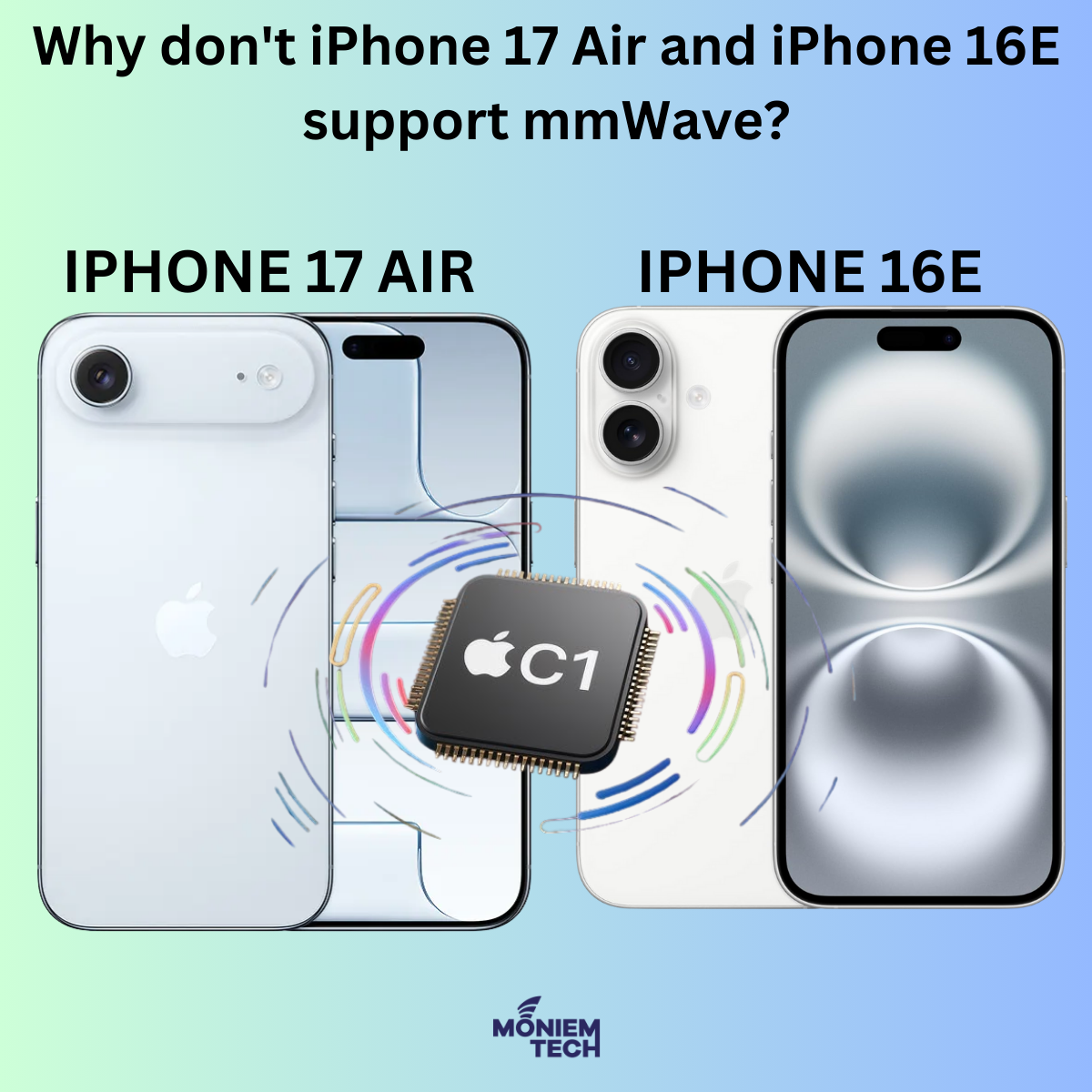mmWave offers the fastest 5G speeds available today; however, its use cases are currently limited. With its extremely short range and poor penetration through obstacles, mmWave mainly makes sense in dense urban areas and crowded venues such as concert halls, stadiums, and airports. In contrast, sub-6GHz 5G provides broader coverage across cities, suburbs, and rural regions, which explains why it has become the globally dominant band.
Apple’s recent iPhone strategy reflects this reality.

iPhone 16e: Efficiency and Accessibility
The iPhone 16e, equipped with Apple’s in-house C1 modem, supports LTE and sub-6GHz 5G but excludes mmWave. This design choice simplified the hardware, reduced costs, and improved battery efficiency—appealing to value-conscious users. Since mmWave coverage is still mainly limited to the U.S. and scarcely deployed internationally, Apple opted against integrating the extra mmWave antenna modules.
iPhone 17 Air: Slim Design, No mmWave
With the iPhone 17 Air, Apple continues this approach. Its new C1X modem remains limited to sub-6GHz 5G. The Air’s ultra-slim profile leaves no room for the specialized mmWave antenna hardware or the dielectric “antenna window” that a chassis requires to support those high-frequency signals.
This positions the iPhone Air as a lighter, more battery-efficient model that sacrifices ultra-fast mmWave speeds in favor of practicality and portability.
Why Apple Holds Back mmWave in Some Models.
Apple’s decision to leave mmWave out of selected models is strategic:
- Global adoption remains limited – even in the U.S., mmWave availability is patchy.
- Sub-6GHz operates worldwide, offering consistent performance across all markets.
- Efficiency matters – mmWave hardware adds complexity, power draw, and higher costs.
- Design constraints – mmWave requires specialized antenna modules and chassis modifications.
The Bigger Picture
As U.S. carriers and global operators continue to prioritize mid-band 5G (like C-band) for wide-area coverage, Apple appears content to treat mmWave as a premium or niche feature rather than a standard across all devices.
- iPhone models with Apple’s C1 or C1X custom modems (like the iPhone 16e and iPhone 17 Air) do not support mmWave.
- Other iPhone 17 models, still powered by Qualcomm modems, include mmWave support for the U.S. market.
Conclusion
Apple is carefully segmenting its product line: mainstream models prioritize efficiency and affordability with sub-6GHz 5G, while premium variants retain mmWave to satisfy U.S. carriers and users in niche, high-density environments. This dual-track approach shows Apple balancing global practicality with local market demands.
